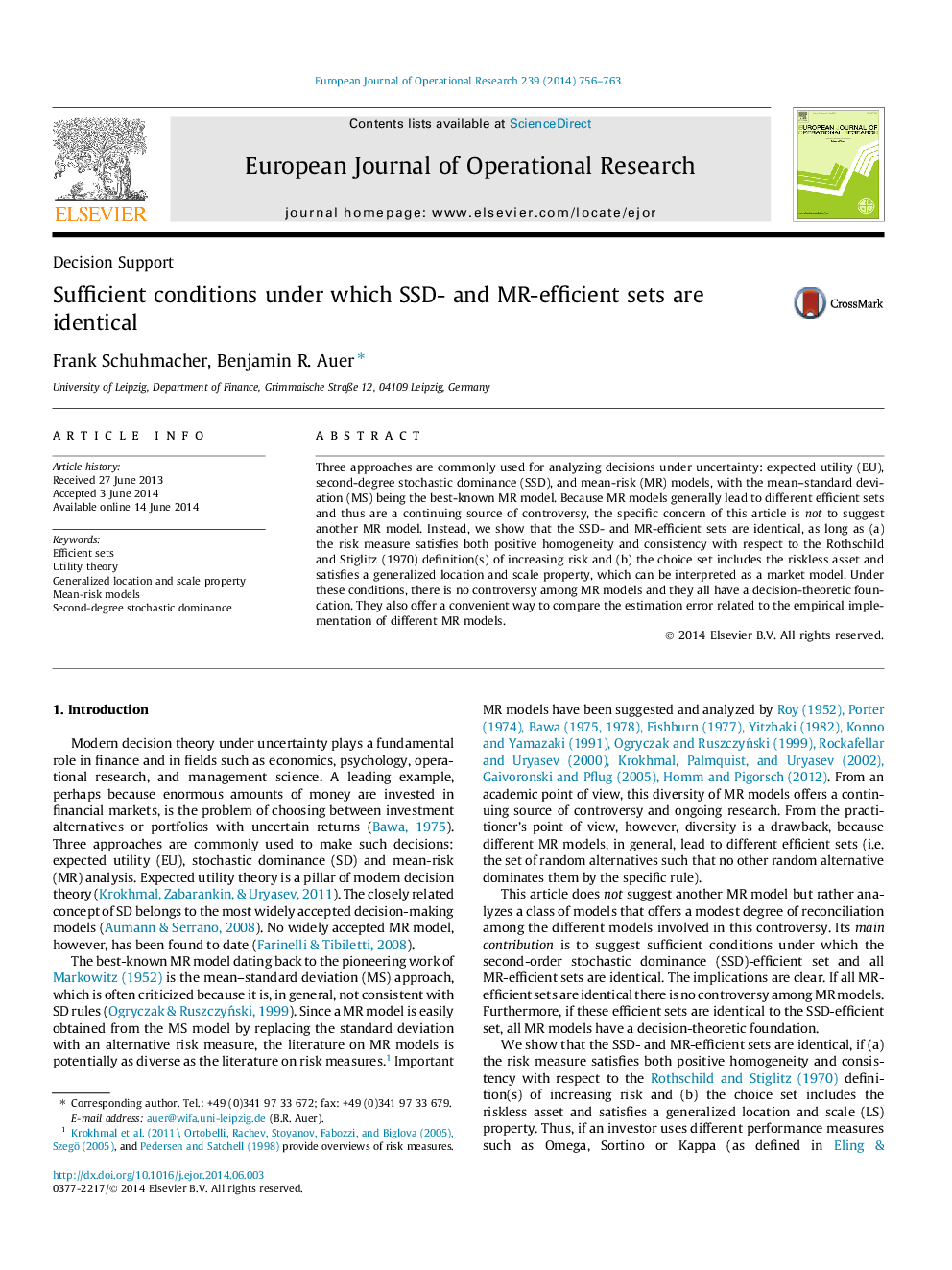| Article ID | Journal | Published Year | Pages | File Type |
|---|---|---|---|---|
| 476617 | European Journal of Operational Research | 2014 | 8 Pages |
•We show that SSD- and MR-efficient sets are identical under three conditions.•First: the risk measure satisfies two mild axiomatic requirements.•Second: the choice set includes the riskless asset.•Third: the choice set satisfies a generalized location and scale property.•These conditions provide a decision-theoretic foundation for many mean-risk models.
Three approaches are commonly used for analyzing decisions under uncertainty: expected utility (EU), second-degree stochastic dominance (SSD), and mean-risk (MR) models, with the mean–standard deviation (MS) being the best-known MR model. Because MR models generally lead to different efficient sets and thus are a continuing source of controversy, the specific concern of this article is not to suggest another MR model. Instead, we show that the SSD- and MR-efficient sets are identical, as long as (a) the risk measure satisfies both positive homogeneity and consistency with respect to the Rothschild and Stiglitz (1970) definition(s) of increasing risk and (b) the choice set includes the riskless asset and satisfies a generalized location and scale property, which can be interpreted as a market model. Under these conditions, there is no controversy among MR models and they all have a decision-theoretic foundation. They also offer a convenient way to compare the estimation error related to the empirical implementation of different MR models.
